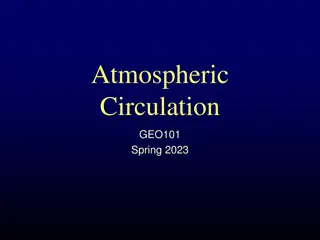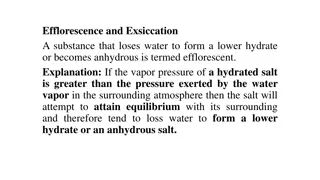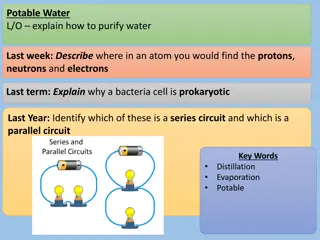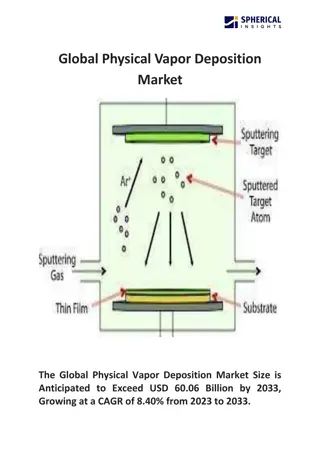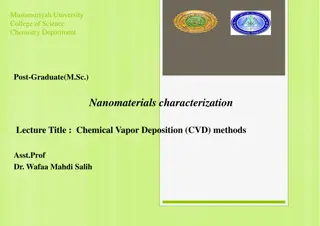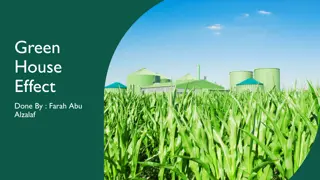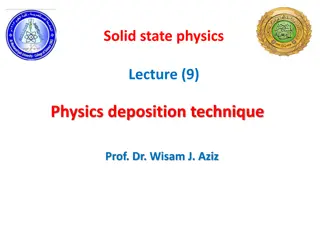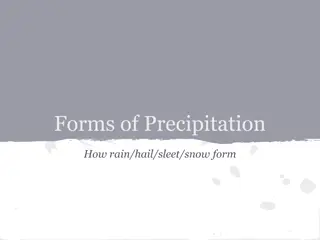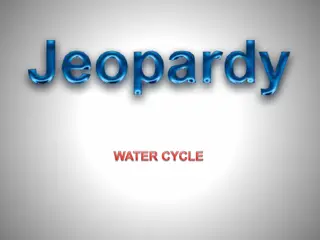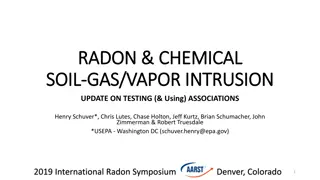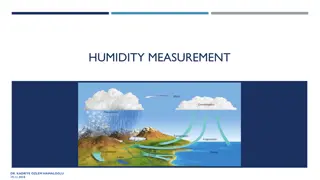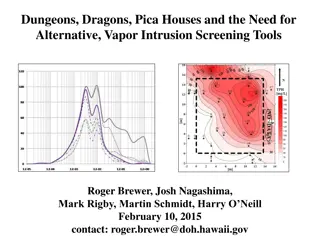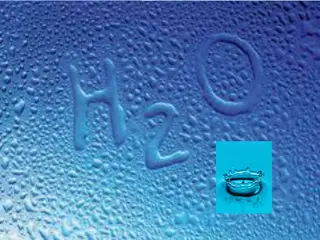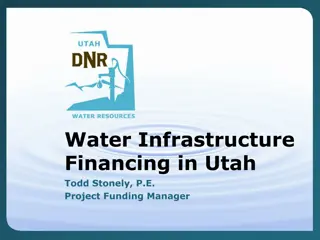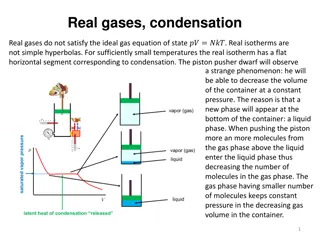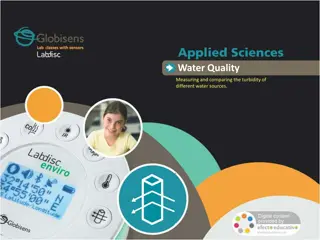Alkaline Water Ionizer Machine In India | Best Alkaline water Machine
\n \nAre you fed up with consuming bland tap water that fails to deliver the health benefits you crave? Ionia presents a solution to revolutionize your water-drinking experience with our alkaline water ionizer machine. Our cutting-edge device converts regular tap water into premium-quality, antioxid
4 views • 5 slides
Water Ionizer India | Best Water Ionizer Machine
Water Ionizer India\n\nAre you worried about the purity of your drinking water? Look no further than Ionia, the premier provider of water ionizers in India. Our state-of-the-art technology converts ordinary tap water into pristine, alkaline, and antioxidant-rich water, ensuring optimal health and vi
2 views • 5 slides
Understanding Water Management: Principles, Practices, and Soil-Water Relations
Explore the principles and practices of water management in agriculture with a focus on water availability, nutrient relationships, and losses. Discover the physical classification of water, available water defined between field capacity and wilting point, soil water potential, and the soil-plant-at
6 views • 17 slides
Understanding the Basic Principles of Distillation
Distillation is a process used to separate components in a liquid mixture based on differences in vapor pressures. This involves techniques like simple, steam, and fractional distillation, as well as understanding binary mixtures, boiling points, vapor pressures, and vapor-liquid equilibria. Raoult'
5 views • 42 slides
Water Filtration & Bottles Stay Refreshed Anywhere, Water Filtration & Bottles
Stay Refreshed Anywhere, Water Filtration & Bottles\nSurvival Supplies Australia understands the importance of staying hydrated outdoors. When you're on the move, having a clean and fresh supply of drinking water is essential. Our range, including water filter bottles and portable water filters, ens
3 views • 1 slides
State Water Resources Control Board's Urban Water Use Efficiency Objectives
The State Water Resources Control Board proposed Urban Water Use Efficiency Objectives in March 2023 to address the challenges of a hotter, drier future. The objectives include creating storage space for up to 4 million acre-feet of water, recycling and reusing at least 800,000 acre-feet of water pe
0 views • 32 slides
Understanding Earth's Water Cycle and Atmospheric Processes
Explore the intricate workings of Earth's water cycle and atmospheric processes, including the distribution of water across various reservoirs, the significance of humidity in the atmosphere, and the influence of temperature on water vapor content. Gain insights into global wind patterns, pressure s
2 views • 42 slides
Efflorescence and Exsiccation in Chemistry
Efflorescence refers to the process where a substance loses water to form a lower hydrate or becomes anhydrous due to differences in vapor pressures. Hydrates with vapor pressures greater than the atmosphere tend to exhibit efflorescence. The rate of efflorescence increases with temperature. Exsicca
0 views • 103 slides
Distillation Process for Purifying Water
Distillation is a method used to purify water by separating it from impurities through evaporation and condensation. It involves heating the water until it evaporates, then cooling the vapor to collect the purified water. This process ensures the removal of harmful substances and microbes, resulting
1 views • 11 slides
Understanding Transpiration in Plants: Importance and Mechanisms
Transpiration is the process in which plants lose water vapor through their aerial parts, playing a crucial role in their overall functioning. This loss of water occurs mainly through stomata, lenticels, and the cuticle of leaves and stems. Different types of transpiration like stomatal, lenticular,
0 views • 19 slides
Physical Vapor Deposition Market
The Global Physical Vapor Deposition Market size is expected to be worth around USD 7 Billion by 2033, from USD 3.2 Billion in 2023, growing at a CAGR of 8.1% during the forecast period from 2024 to 2033.\nClick here for request a sample : \/\/market
1 views • 4 slides
Global Physical Vapor Deposition Market
The Global Physical Vapor Deposition Market Size is Anticipated to Exceed USD 60.06 Billion by 2033, Growing at a CAGR of 8.40% from 2023 to 2033.\n\n
0 views • 8 slides
Colligative Properties in Solutions: Vapor Pressure, Freezing Point Depression, and Osmotic Pressure
Colligative properties such as vapor pressure lowering, freezing point depression, and osmotic pressure are characteristics of solutions that depend on the number of solute particles present. This text explores how these properties are related to the concentration of solute in a solution and how the
0 views • 14 slides
Chemical Vapor Deposition (CVD) Methods for Nanomaterials Characterization
Chemical Vapor Deposition (CVD) is a widely used method in the field of nanomaterial synthesis, particularly for growing nanotubes, nanowires, and nanoparticles. The process involves decomposing a gaseous precursor on a substrate with the help of a catalyst, either predeposited or provided in the ga
3 views • 8 slides
The Global Water Crisis and Transboundary Issues in Southern Africa
The global water crisis is a pressing issue affecting millions worldwide, with about 700 million people currently living below the water-stress threshold. By 2025, this number is projected to reach 3 billion. The increasing pressure on shared water resources in countries like Botswana, Namibia, and
0 views • 52 slides
Understanding the Greenhouse Effect and Its Impact
The greenhouse effect is the trapping of the sun's warmth in a planet's lower atmosphere, primarily by greenhouse gases like carbon dioxide and water vapor. These gases absorb and re-emit infrared radiation, which leads to an increase in temperatures. While carbon dioxide and water vapor are signifi
1 views • 13 slides
Overview of Physical Vapor Deposition (PVD) Techniques in Thin Film Deposition
Physical Vapor Deposition (PVD) includes various vacuum techniques for depositing thin films on substrates through physical means. This method involves a dry vacuum process to coat objects with different materials. PVD processes utilize methods like Mechanical, Evaporation, Sputtering, Ion plating,
0 views • 31 slides
Forms of Precipitation and How They Form
Precipitation is any form of water that falls to earth and occurs when water evaporates into the atmosphere, saturates it, then condenses back into water. There are 5 main types of precipitation: rain, sleet, hail, snow, and freezing rain. Rain forms as water droplets in clouds collide and grow too
1 views • 14 slides
Water Storage Tanks Hydraulic Modeling and Water Quality Considerations
This presentation by Justine Carroll, P.E., Project Manager, focuses on the hydraulic modeling and water quality considerations related to water storage tanks. It covers topics such as water age evaluation, steady state modeling, extended period simulations, pump controls, demand patterns, EPS verif
0 views • 34 slides
IIASA's Water Program: History, Strategy, and Progress
IIASA's Water Program focuses on addressing water insecurity, uncertain futures, food security, degraded water environments, and the impacts of floods and droughts. Their mission involves conducting interdisciplinary research to identify sustainable water solutions for improving human well-being thr
0 views • 10 slides
Improving Water Quality and Supply Efficiency for Yorkshire Water Customers
Yorkshire Water aims to enhance water quality and reduce interruptions in supply for its customers. By investing in maintenance and modernization of water mains, they seek to address issues related to the look, taste, and smell of tap water, as well as minimize unplanned interruptions to the water s
0 views • 30 slides
Understanding Water Potential in Plant Physiology
Water potential is a crucial concept in plant physiology, driving the movement of water within plants. It is a measure of potential energy in water and influences processes like photosynthesis. This potential is influenced by factors such as solute concentration, pressure, gravity, and matrix effect
0 views • 25 slides
Understanding the Hydrologic Cycle and Water in the Atmosphere
Exploring the intricate processes of evaporation, condensation, and cloud formation in the atmosphere, the hydrologic cycle's closed system, and the impact of global warming on Earth's water resources. Dive into the essential concepts of water absorption, redistribution of energy, humidity, and the
0 views • 18 slides
Understanding Earth's Atmosphere Composition and Layers
Earth's atmosphere is primarily composed of nitrogen and oxygen, with other gases like argon, CO2, and water vapor making up the remaining percentage. While the levels of nitrogen and oxygen remain constant, variable gases like water vapor fluctuate based on location and time. CO2 levels have been i
0 views • 53 slides
Understanding Water Variability and Cloud Formation near Tropical Tropopause
Exploring the horizontal variability of water and its relation to cloud fraction using aircraft observations to enhance grid-scale cloud formation representation in GEOS-5. Addressing the chronic water vapor issue in GEOS-5, potential causes, motivating science questions, and methodologies to improv
0 views • 17 slides
Fascinating Facts About Water and Its Importance
Water is an essential resource, with only a small percentage being fresh and usable. The water cycle, water usage statistics, and the significance of water for people, plants, and animals are highlighted. The content covers details on global water distribution, water scarcity in Australia, and daily
1 views • 9 slides
Understanding the Water Cycle: Evaporation, Condensation & Precipitation
Explore the water cycle process through evaporation, condensation, and precipitation. Learn how air temperature affects water vapor, leading to the formation of rain and snow. Discover the importance of energy in driving the water cycle and observe examples of these phenomena in nature.
0 views • 53 slides
Understanding Radon and Chemical Soil Gas Vapor Intrusion
This presentation at the 2019 International Radon Symposium in Denver, Colorado explores the association between radon, chemical soil gas, and vapor intrusion. It discusses the challenges in testing, analyzing differences, and the need for supplemental measurements like radon to validate models. The
0 views • 19 slides
Fundamentals of Environmental Thermal Engineering in Mechanical & Aerospace Engineering
Explore the key concepts of environmental thermal engineering in Mechanical & Aerospace Engineering, covering topics such as the Carnot cycle, actual vapor-compression cycle, principles of the vapor-compression cycle, Carnot heat engine, refrigeration cycle, and coefficient of performance. Understan
0 views • 51 slides
Understanding Humidity: Measurement, Classification, and Calculation
Humidity is the amount of water vapor in the air, impacting weather conditions and human comfort. It can be classified as absolute humidity and relative humidity, each playing a crucial role in determining atmospheric moisture levels. The calculation of relative humidity involves comparing the vapor
0 views • 24 slides
Alternative Vapor Intrusion Screening Tools for Environmental Investigations
Estimation of subslab attenuation factors for vapor intrusion investigations is crucial in assessing indoor air quality. This study reviews EPA methods, emphasizing the importance of vapor attenuation in screening indoor air for contaminants. Various experts contributed insights, leading to the deve
0 views • 35 slides
Insights on High-Resolution Earth Data at 21km Intervals
New data at 21km resolution provides a comprehensive view of various parameters including frequency averages, brightness temperatures, water vapor profiles, rain rates, pressure profiles, and temperature estimates. The files are now on a consistent 21km grid, reflecting the intent to capture tempera
0 views • 12 slides
Fascinating Facts About Water and Its Properties
Explore interesting facts about water, including its crucial role for life on Earth, the distribution of water on our planet, and the properties of the water molecule. Learn about the importance of water for human health, the chemical reactions that form water, and the different states of water. Dis
0 views • 26 slides
Water Infrastructure Financing in Utah: Overview of Revolving Loan Funds
Utah's water infrastructure financing system is managed through revolving loan funds established by the Board of Water Resources. These funds date back to 1947 and have been consistently funded from various sources to support projects related to water supply, flood control, and dam safety. The progr
0 views • 12 slides
Understanding Real Gases and Condensation Phenomenon
Real gases deviate from ideal gas behavior, leading to condensation at low temperatures. The van der Waals equation accounts for real gas properties with empirical constants. The Maxwell construction method predicts the saturated vapor pressure on the isotherm, crucial for understanding liquid-vapor
0 views • 13 slides
Water Quality - Measuring Turbidity of Different Water Sources
The activity involves comparing the turbidity of various natural and artificial water sources using a Labidsc turbidity sensor. Monitoring water quality is crucial for identifying pollutants, trends, and usage patterns in water resources. Factors like human activities affecting water quality through
0 views • 18 slides
Understanding Colligative Properties in Chemistry
Colligative properties in chemistry depend on the amount and type of solute particles added to a sample, as well as the intermolecular forces at play. They include vapor pressure, boiling point elevation, and freezing point depression. Vapor pressure is the pressure exerted by a vapor on its surroun
0 views • 7 slides
Understanding Atmospheric Pressure, Wind Variations, and Humidity in Weather Systems
The atmosphere is composed of various elements like gaseous molecules, water vapor, and dust particles. Key weather variables include atmospheric pressure, temperature, humidity, wind, cloud cover, and precipitation. Atmospheric pressure is influenced by the weight of air above a point, with average
0 views • 17 slides
Understanding Colligative Properties and Vapor Pressure in Solutions
Colligative properties are solution properties dependent only on solute concentration, not solute identity. The Van't Hoff factor helps in such equations, especially for ionic compounds. Vapor pressure lowering is a key colligative property where a solute decreases vapor pressure. Raoult's Law expla
0 views • 23 slides
How to Choose the Best Vape Electronic Cigarette and Accessories
A vape electronic cigarette (often referred to as a vape or e-cig) is a battery-powered device designed to mimic the experience of smoking. Instead of burning tobacco, it heats a liquid (e-liquid or vape juice) that turns into vapor. This vapor is th
5 views • 3 slides






